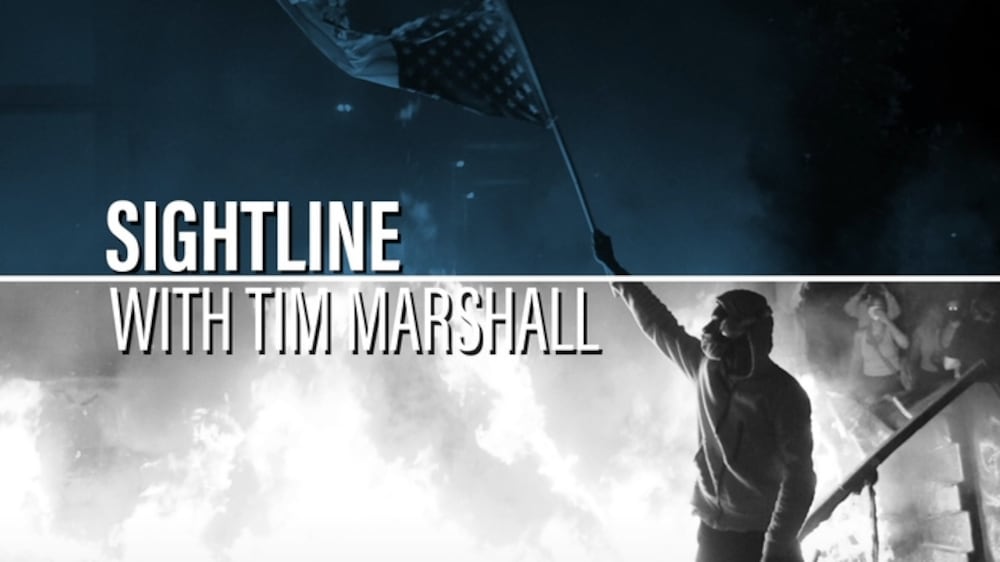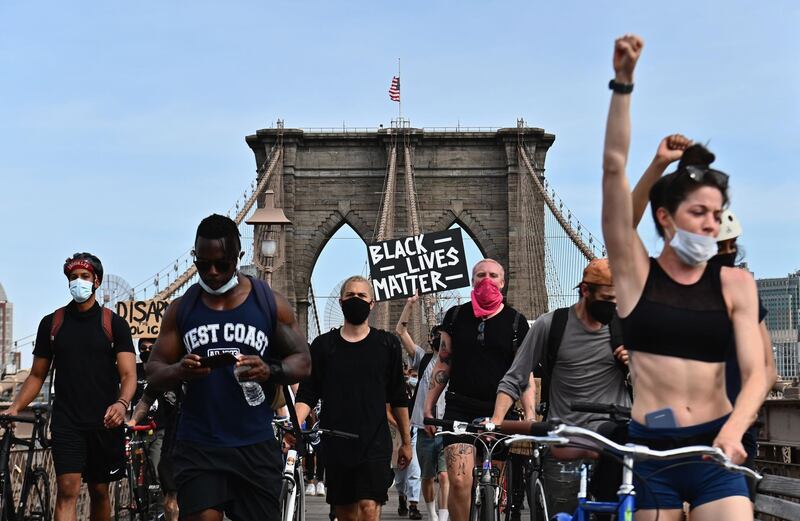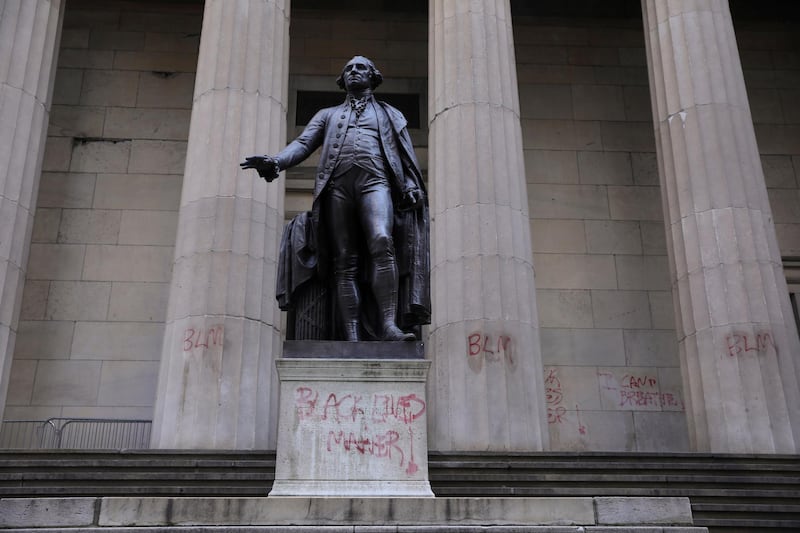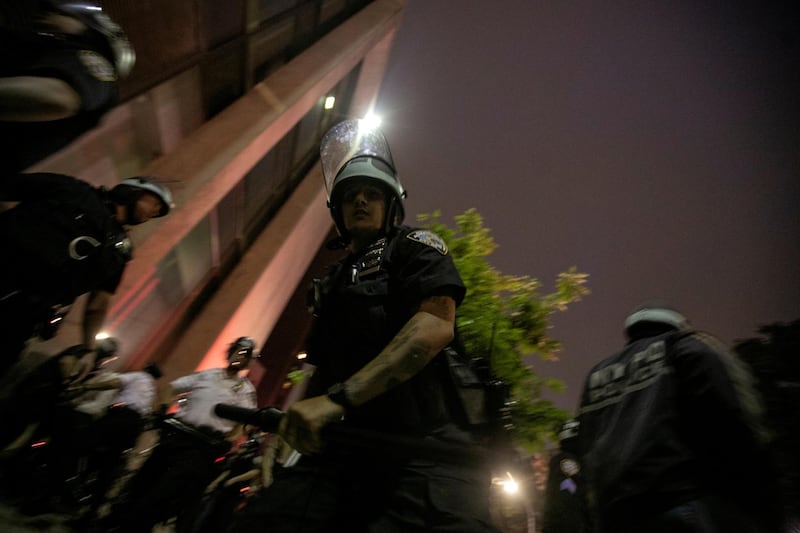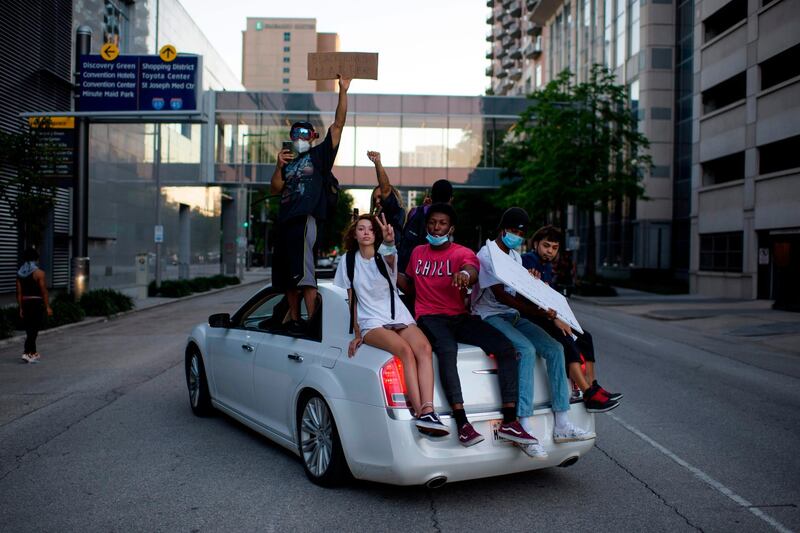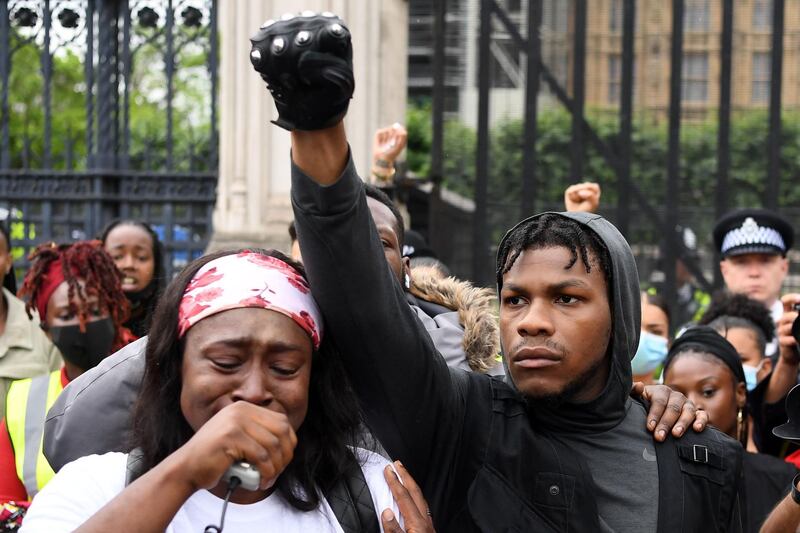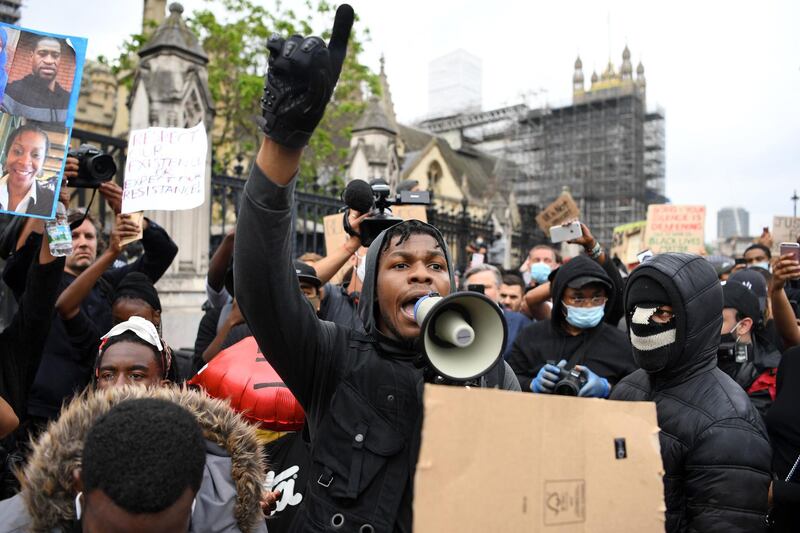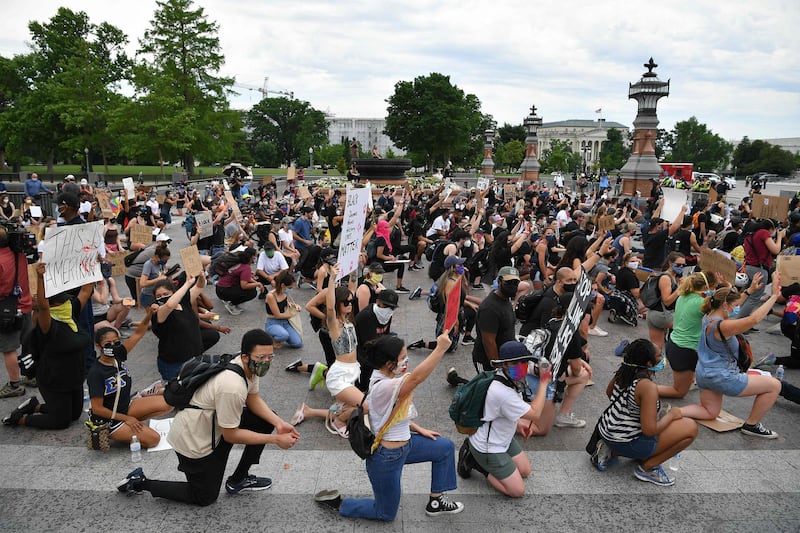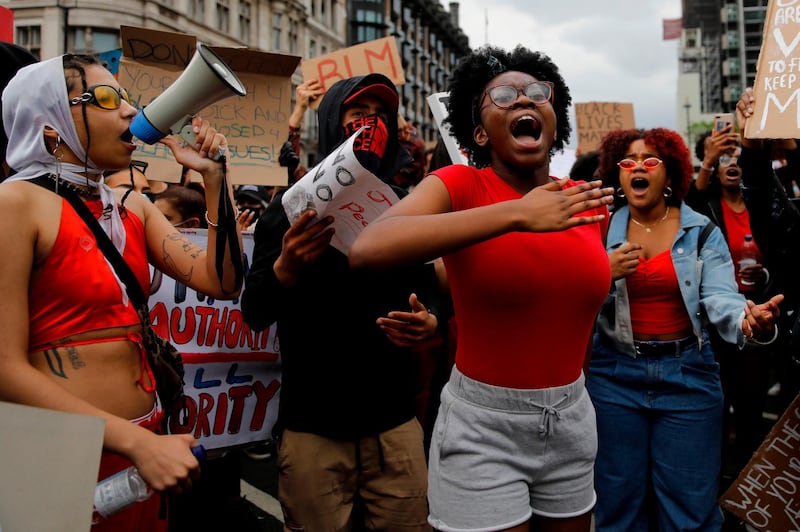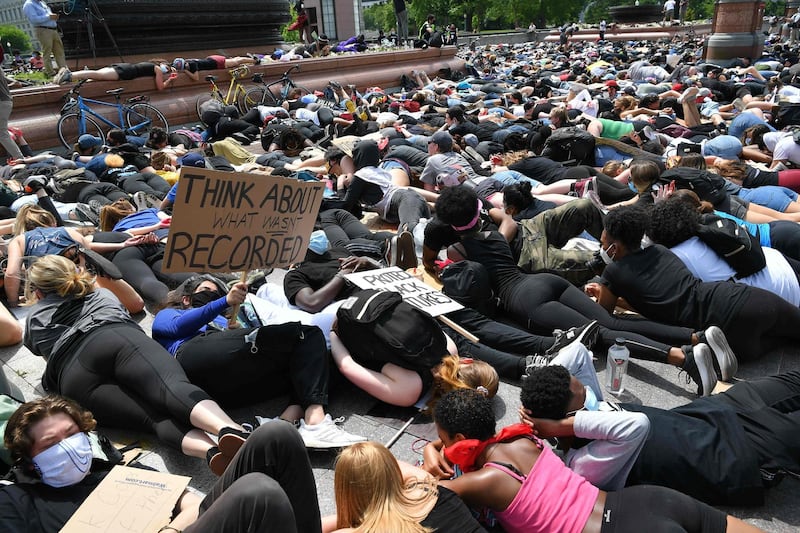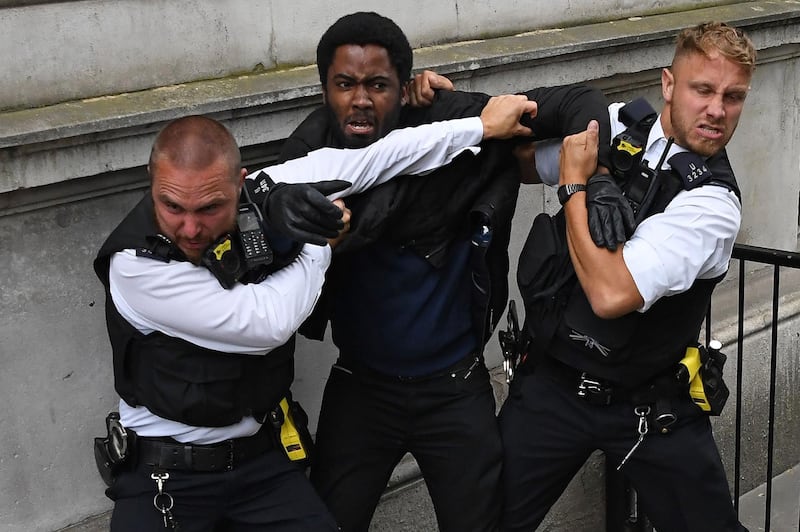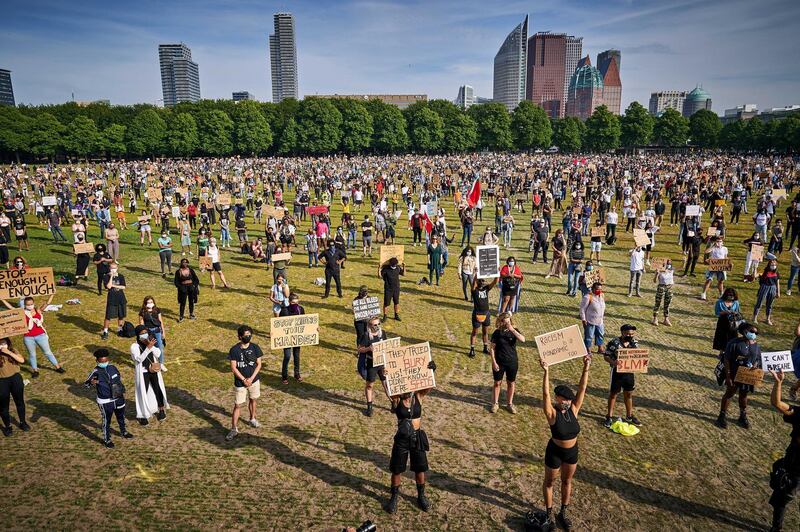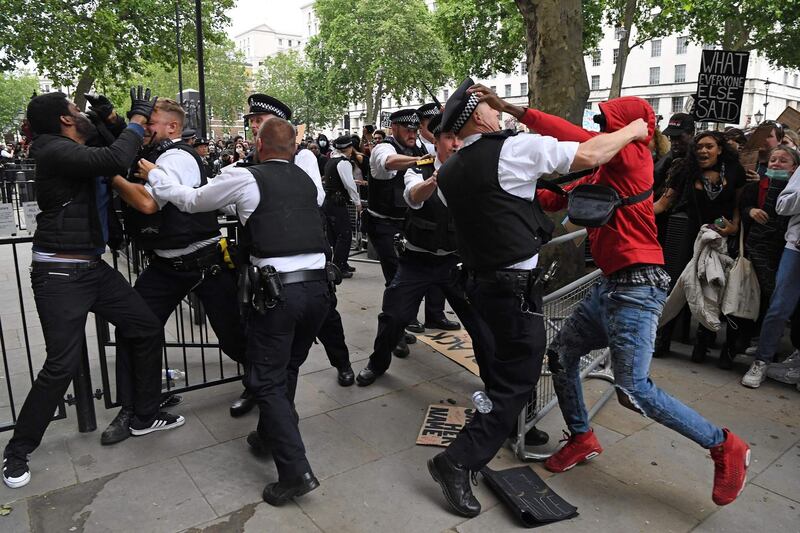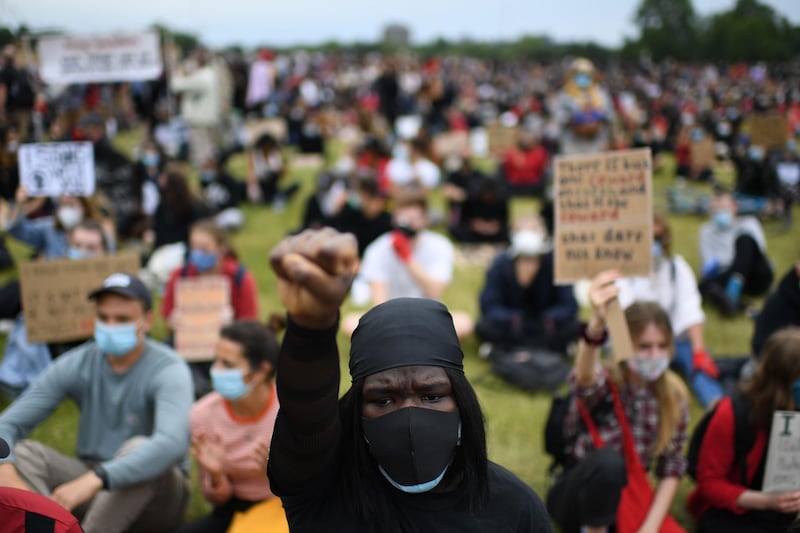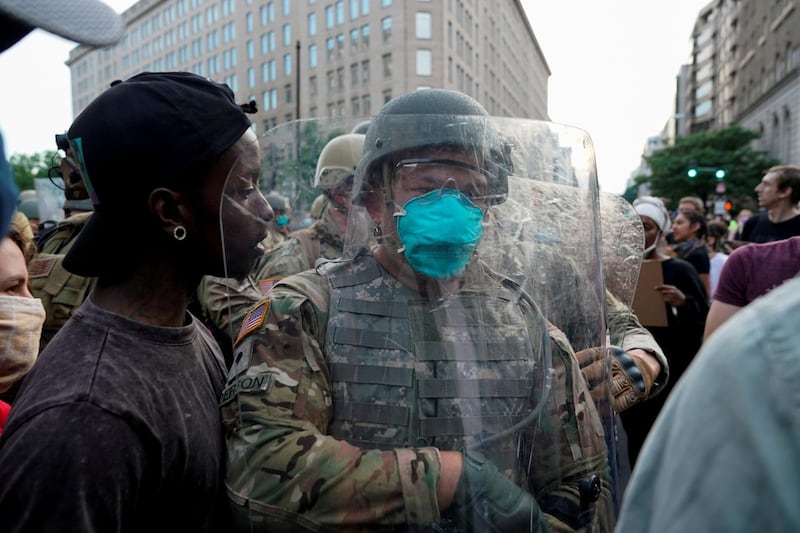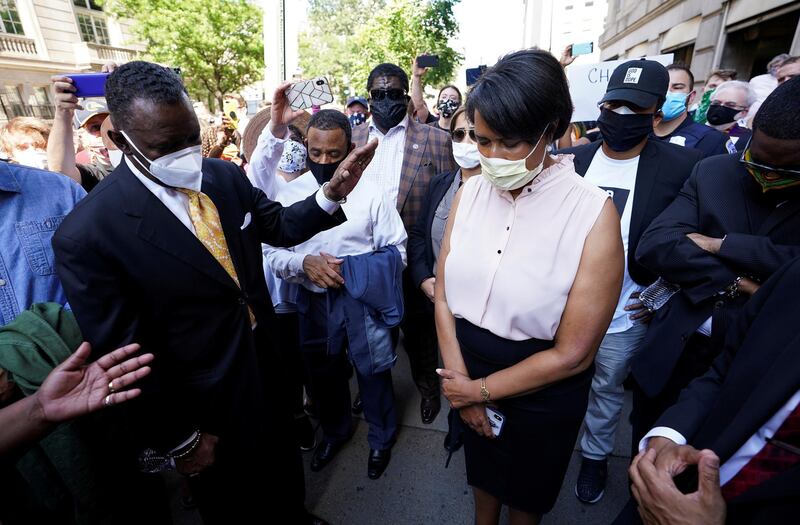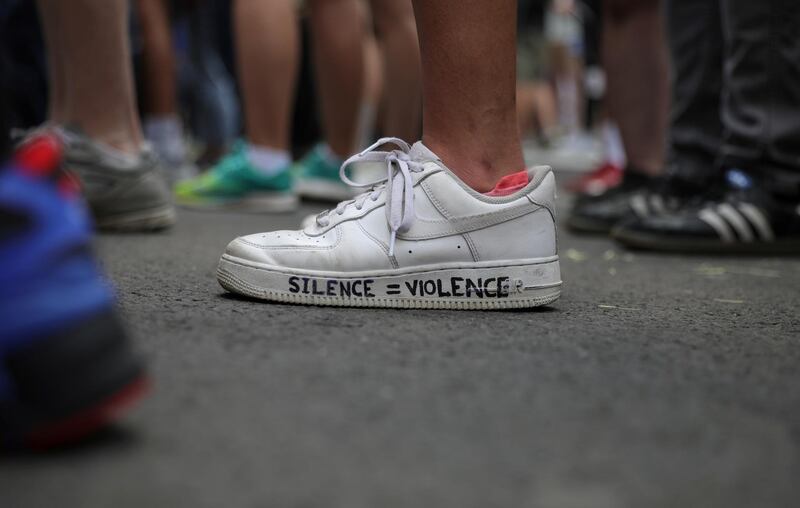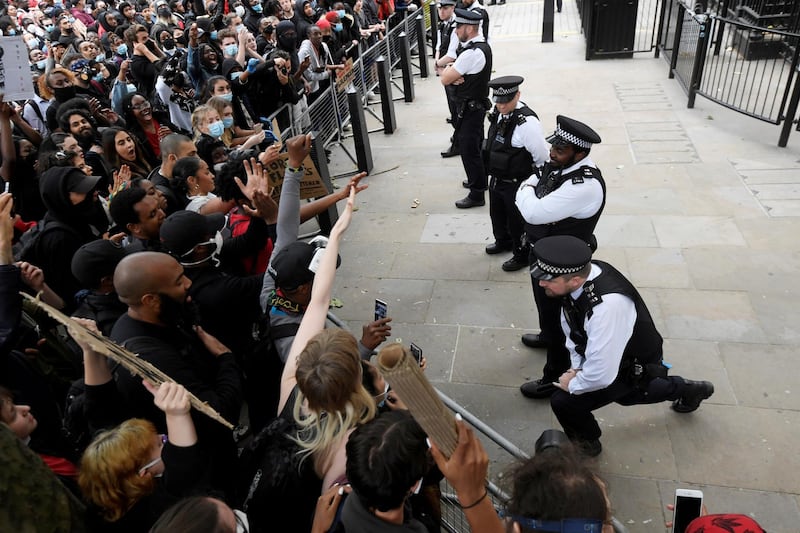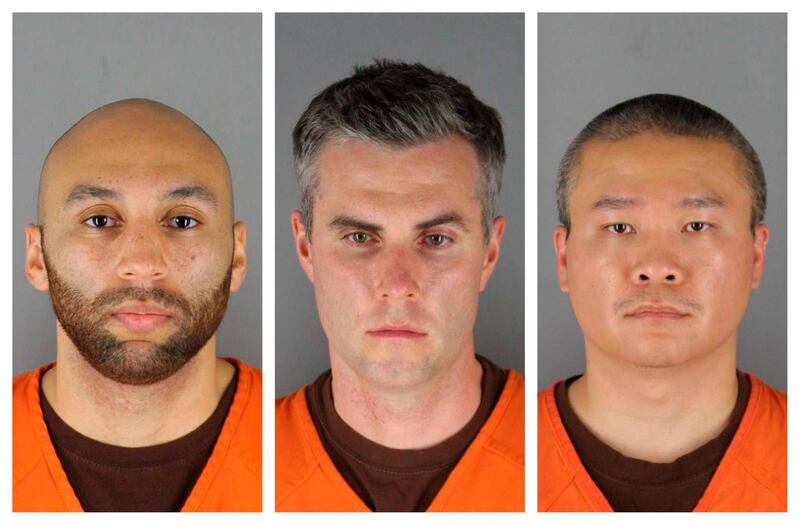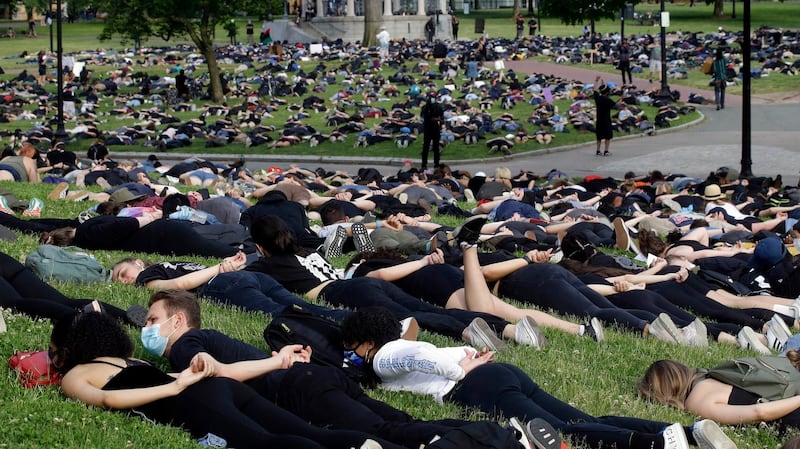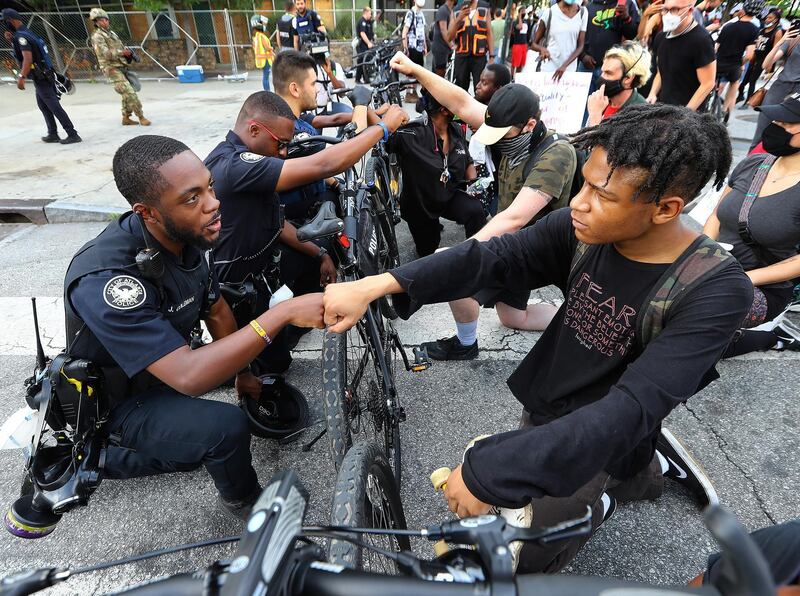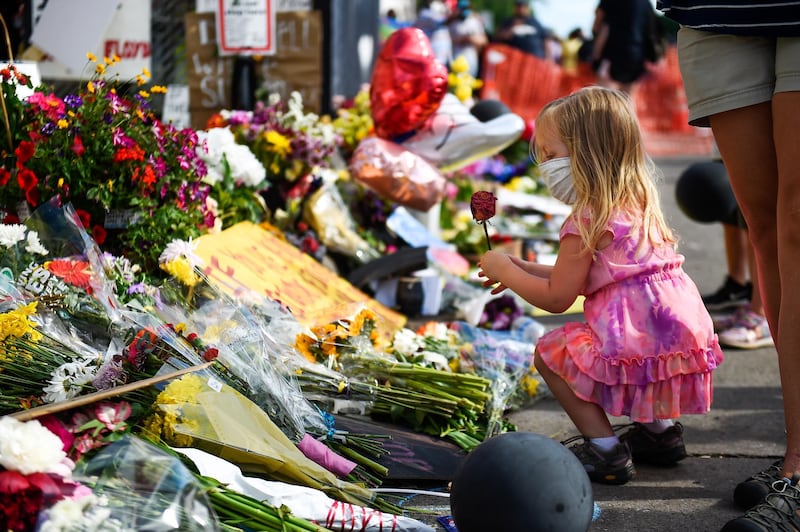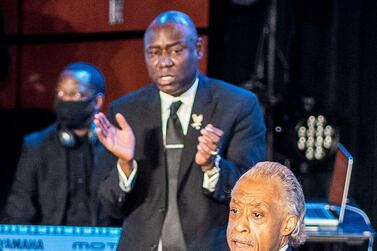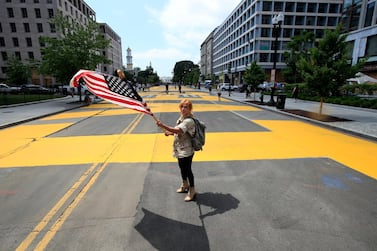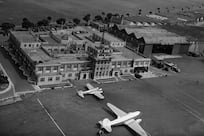It was early afternoon in New York last Saturday when I first heard loud chants outside my window. I rushed down six flights of stairs. A big crowd of people was marching uptown. A white man, his mouth and nose covered by a mask, was perched on top of a subway entrance, balancing himself on a metal bar. “I can’t breathe," he shouted out, drawing responses from the marching crowd, as they repeated some of the painful last words of George Floyd, the unarmed black American who died on May 25 after a police officer kneeled on his neck for nearly nine minutes despite his plea as other officers watched. His death has ignited outrage across the United States.
Angry protesters clash with police in Washington DC and New York
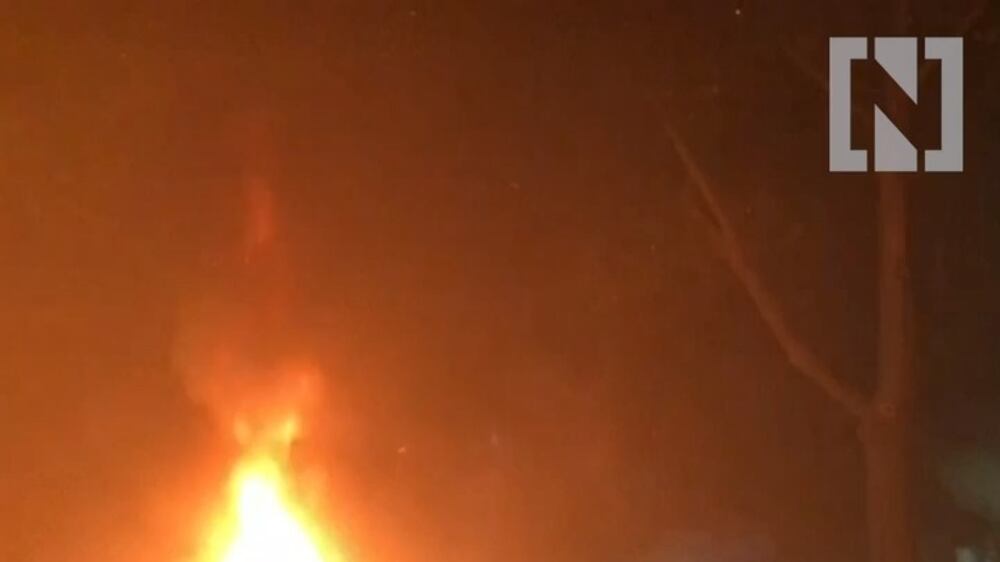
“Resist Police Brutality! Resist Black Genocide!” a poster read. “White supremacy = Terrorism", read another. One protester brandished the sign “America is a failed state’’. A few other people were rolling their bicycles along as they marched. Some had brought their dogs along. It was an ethnically diverse crowd and the atmosphere good-natured.
I was a journalist in Iran when anti-government protests erupted in 2009 over the controversial results of the presidential election. For days, I covered rallies that resulted in hundreds of arrests and the deaths of dozens of Iranians. I was also in the Middle East when the Arab uprisings that started in Tunisia at the end of 2010 and spread across the region toppled dictators. Last year and in 2018, I covered nationwide protests across Iran over fuel price hikes, government corruption and deteriorating living conditions amid tightening US sanctions.
Descent into violence
In New York that afternoon of May 30, the march was peaceful. Just the way many of the demonstrations in the Middle East had started: stemming from a desire of citizens to disagree and be heard. What I had not expected was the situation cascading into widespread civil disobedience, unrest and scenes of violence in the streets of the financial centre of the world.
For the past two-and-a-half months, New York City had been dead. Its businesses closed; residents relegated to a life indoors as the trees blossomed and one of the most densely populated cities in the US battled Covid-19. My neighbourhood in the West Village area, usually buzzing with student life, had become so quiet that I woke up to birds chirping. Its quaint streets were akin to an empty movie set.
About a week ago, the city, set to finally reopen on June 8, began coming out of its comatose state with some cafes and restaurants carefully dispensing cookies and food to go. Life was returning to some semblance of normality. Neighbours ventured outdoors to chat in the streets – but everyone was still sporting a mask. Some sat on their porches with their dogs. Others were reading and enjoying the warming weather.
And then in a matter of days, my neighbourhood in Manhattan went from a ghost town to feeling at times like a war zone. From my flat a few blocks away from Union Square I now hear police helicopters hovering above for much of the day and night. Police sirens wailing well into the night have replaced those of ambulances rushing coronavirus patients to hospital. Members of the New York Police Department are now stationed at main intersections and when I go out for a walk; it’s hard not to see their cars and vans everywhere.
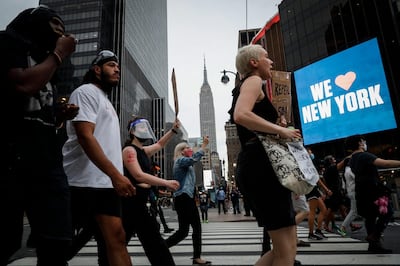
Suddenly officials are engaged in a vastly different struggle: controlling protests that have erupted citywide over the death of Floyd. Those moments of the police officer kneeling on his neck caught on camera are what many Americans see as a microcosm of police brutality and the racial injustice that has marred the lives of blacks and other minorities in the US.
Within days, protests spread throughout the US and ever since May 30 my neighbourhood has been the scene of several demonstrations, most of them peaceful, but some bursting with anger. Bins have been set on fire. Protesters have defied the police, climbing on top of makeshift barricades. Videos circulating online show some people looting and smashing shop windows in Lower East Manhattan and in Midtown.
At dusk on Saturday I ran into a group of 30 to 40 young men. They were walking towards Union Square, one of the gathering points for protesters. On their way they detached metal boards and wooden frames from shops and hurled them into the middle of an empty street. Bins were set on fire. One young man climbed on top of metal debris and raised his arms to the cheers of the others, while he taunted firemen and police cars arriving on the scene.
Pushed to the edge
The change of scenery on the same street from a few hours earlier was striking. These young men, mostly black American, were not holding signs or chanting. Their discontent was palpable, their frustration unfurling.
Covid-19 has been impacting the black community at a disproportionate rate due to higher exposure in denser and poorer communities, inadequate healthcare, and pre-existing health conditions. And because they have often been the first to lose their jobs.
"What you should see when you see black protesters in the age of Trump and coronavirus is people pushed to the edge not because they want bars and nail salons open,'' Kareem Abdul-Jabbar, the black former NBA basketball player, wrote in a May 30 op-ed in the LA Times, "but because they want to live. To breathe."
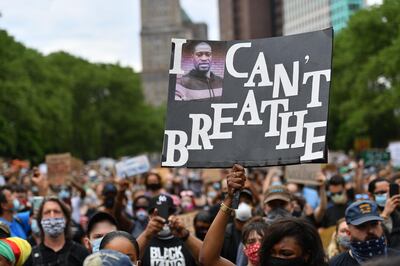
President Donald Trump, who this week referred to himself as the “president of law and order”, has called for overwhelming security force presence to put down what he called “professional anarchists” and their “acts of domestic terror”. Some analysts have likened his remarks to those of a former Iranian president who in 2009 referred to protesters as “dirt and dust”, saying they must be put down by force as to not endanger national security. The US president’s authoritarian approach has infuriated Democrats and progressive Americans but will it propel him to re-election in November?
In New York, Governor Andrew Cuomo, who has garnered a great following for his handling of the pandemic, chose more nuanced rhetoric. The night curfew imposed on Monday was not about the protesters who are mostly peaceful, Mr Cuomo said in a briefing the next day; it was “designed to help the police deal with the looters”.
Strange interludes
On Sunday morning I cycled up to Central Park, the lungs of the city. In Sheep Meadow, a large expanse of grass, dozens of New Yorkers of all ages and ethnicities were lounging around, keeping in line with the prescribed two-metre social distancing guideline.
A young girl and boy were tossing a frisbee. A man in Stars and Stripes shorts was tanning, face down on a towel. Two men were throwing an American football back and forth. To my right, a white man with a sleeve tattoo and a silver-haired crew cut was speaking to his Dachshund. His conversation was interrupted by a black lady in a red, flowery summer dress who approached him. “Hi! My friend thinks you’re cute,” she said, smiling and pointing in the direction she came from. “What’s your number?”
It was a warm day and four perfectly white clouds were sliding across in the sky above. For a moment, it felt as though the city was taking a break from battling Covid and the protests.
That Sunday night at 8.50pm, as I took a walk towards Chelsea, an area known for its bars and art galleries, I ran into a large group of protesters. “Black Lives Matter," they chanted, many from behind their face masks. “No Justice! No Peace.” Several Harley-Davidson riders passed by and honked in support. I walked alongside the protesters for a while. At one point a woman came up to a window and started cheering them. As I left the demonstration, I saw a group of 30 to 40 policemen carrying batons tailing the protesters.
In the news and on social media what has stood out in recent days are scenes of police brutality. Tear gas being used, protesters being forcefully shoved aside or beaten down. In a shocking video circulated on Twitter, two police cars rammed into people in a Brooklyn neighborhood. In another, a policeman was seen pointing his gun at a group of protesters in my neighborhood, metres away from an iconic bookstore I buy most my of books from.
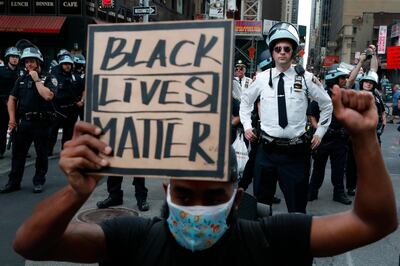
Still less reported and visible are some unexpected exchanges. On Sunday night, as I walked away from the demonstrations, I came across three policemen standing at a street corner. A black lady, her hair tightly tied in a bun on top of her head, held two children by the hand as she walked towards the officers. “Do you know where the protesters are?” she asked one of them. And then after pausing for a second, she said: “I want to show my kids.”
“They went that way,” said the policeman, pointing in the direction I had come from. “Thank you,” she said, and off she went with her son and daughter.
A few hundred metres away, I saw two black men walking down Seventh Avenue. They passed a street that was closed off by wooden barriers and a dozen policemen. As they strolled by, they turned towards the policemen and fist bumped a couple of them in silence before simply walking away. The scene left me wondering what had been said but not spoken in that moment.
'Hands up, don't shoot'
On Monday morning, the Farmers Market at Union Square was on. Stalls displayed fresh tomatoes, stacks of rhubarb, loaves of sourdough bread and rows of garden plants. Half a dozen protesters stood outside the subway entrance. Several police officers were visible nearby. One placard on the ground read “We are not here to hurt you. We are here to educate you. #BlackLivesMatter”.
Two black women were engaged in a discussion. “We are not a minority; we are a majority!” said one as her voice started to rise. “That’s right, that’s right!” said the younger one whose sign read “Excuse me officer, what is my crime? Being black?”
As I lingered, they both turned and looked at me. I smiled from behind my mask. “That’s right,” I said.
Some opportunists are capitalising on the unrest. Later that morning, as I walked around Union Square and Greenwich Village, I saw floor to ceiling windows of a CVS pharmacy entirely smashed. An employee was sweeping up the broken glass. A Verizon mobile phone shop had met the same fate. Workers were boarding up a Reebok store and a Pret a Manger food chain outlet, much like shops on Fifth Avenue. I found an Urban Outfitter shop which had been broken into and looted, now fully dressed up in wooden panels. Further down, a pharmacy was completely concealed by wooden boards, except for a sign saying it was open.
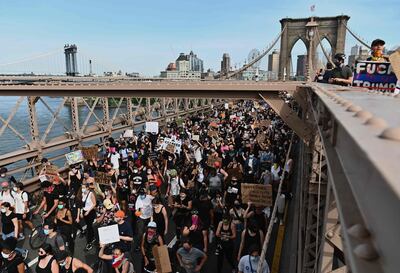
The unemployment rate, which expected to hit Great Depression levels this month, instead fell to 13.3 per cent in May as businesses in the country reopened.
On Monday, New York City imposed a curfew from 11pm to 5am. On Tuesday, officials announced the curfew would be in place from 8pm to 5am and until June 7, calling for residents to head home at dusk. This was a historic measure for a place known as the city that never sleeps, and which even at the height of Covid-19 resisted imposing curfews.
Still that same evening, hundreds and hundreds marched again towards Union Square just an hour away from the curfew. One woman distributed free masks. Another demonstrator played the trumpet. Closer to the square there were a few seconds of silence, then a group of protesters – black, white and Asian, men and women – lifted their arms in the air: “Hands Up, Don’t Shoot,” they shouted. It was clear this crowd would not be back home by 8pm.
Tough and together
I moved to New York for the first time months after the 9/11 terrorist attacks, to attend Columbia University. Back then, I lived in Harlem and in the summer of 2003 worked for a magazine located in Union Square.
In August that year, New York City underwent a full blackout that lasted about 30 hours. With subways down, I walked about 120 blocks from downtown New York to my flat. On the way up I was struck by the spontaneous solidarity that emerged. Some started directing traffic, restaurants owners and cafe managers stepped out onto the pavement distributing food, ice-cream and cool beers to passersby. Back home that night in my predominantly black American neighbourhood, I climbed up to the rooftop and sat for hours with my neighbours looking at a sombre city.
New Yorkers have a reputation for being tough, and it’s an adjective that Mr Cuomo brought up again and again this past spring as he spoke of the health and economic crisis brought on by the pandemic. But I’ve seen the city turn on to itself when collectively challenged, drawing on its best resources: strength, courage, tolerance, generosity and even humanity. It was all encapsulated in a black and white poster held by a young girl this week: “We Are New York Tough, Cuomo. And #BlackLivesMatter.”
On Wednesday, peaceful protests continued past the 8pm curfew, perhaps in reaction to the president’s threat to deploy the National Guard. Earlier in the afternoon I overheard two women on the sidelines of a demonstration. As the protesters walked west, one asked the other: “But is it safe?” The other, a middle-aged woman, responded as she moved forward: “I don’t care if it’s safe or not. A beautiful human being was killed and I’m sick and tired of this.”
Sightline with Tim Marshall - America's social contract goes up in flames
